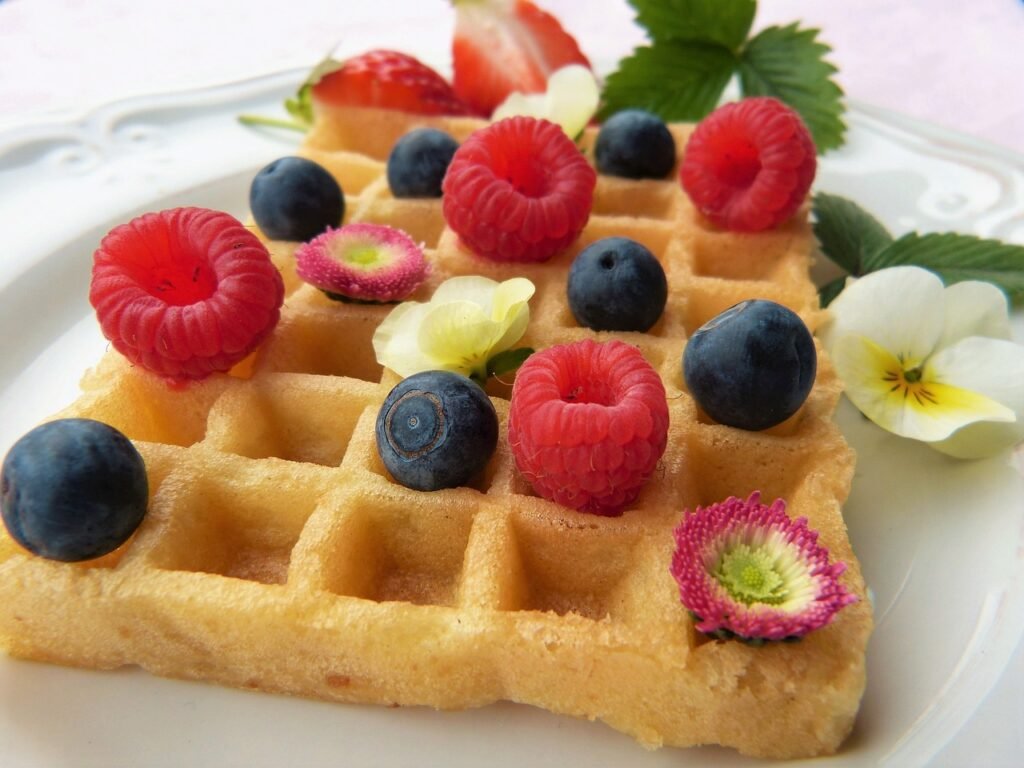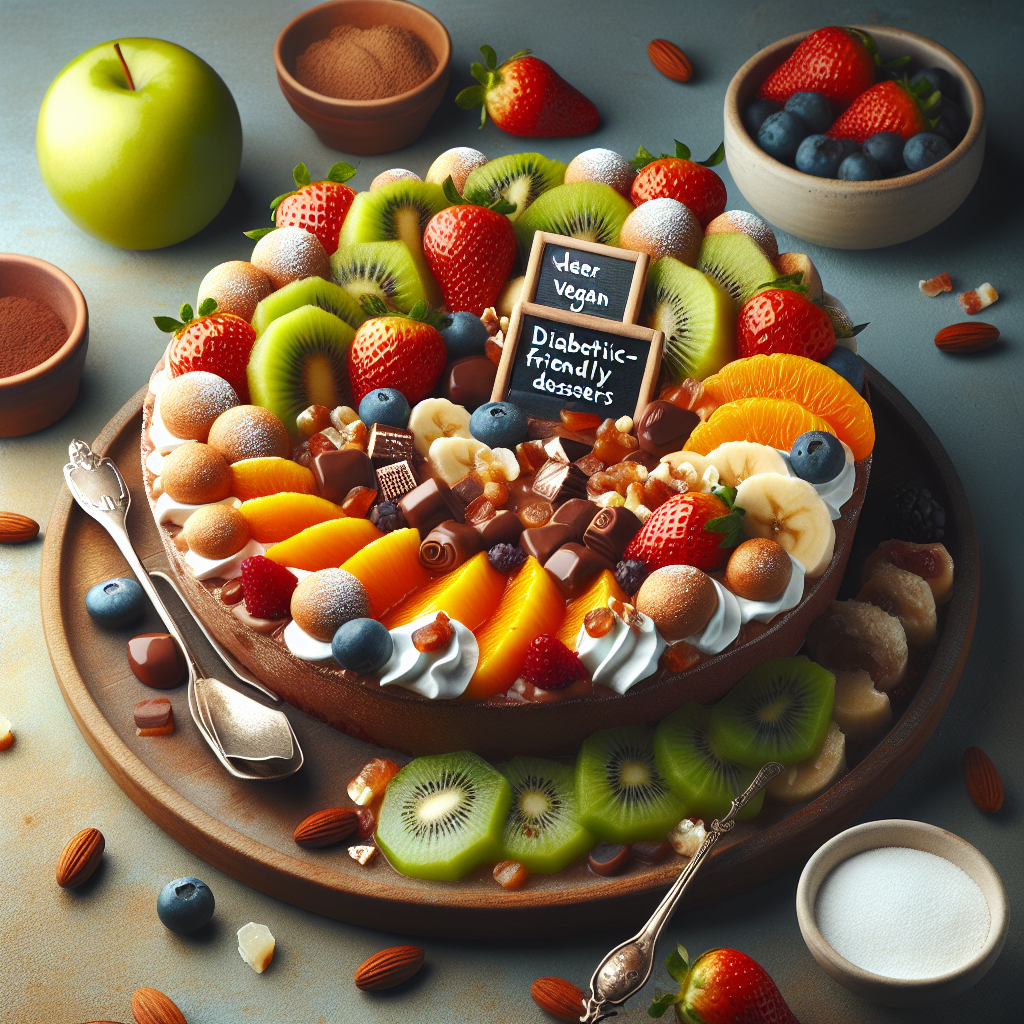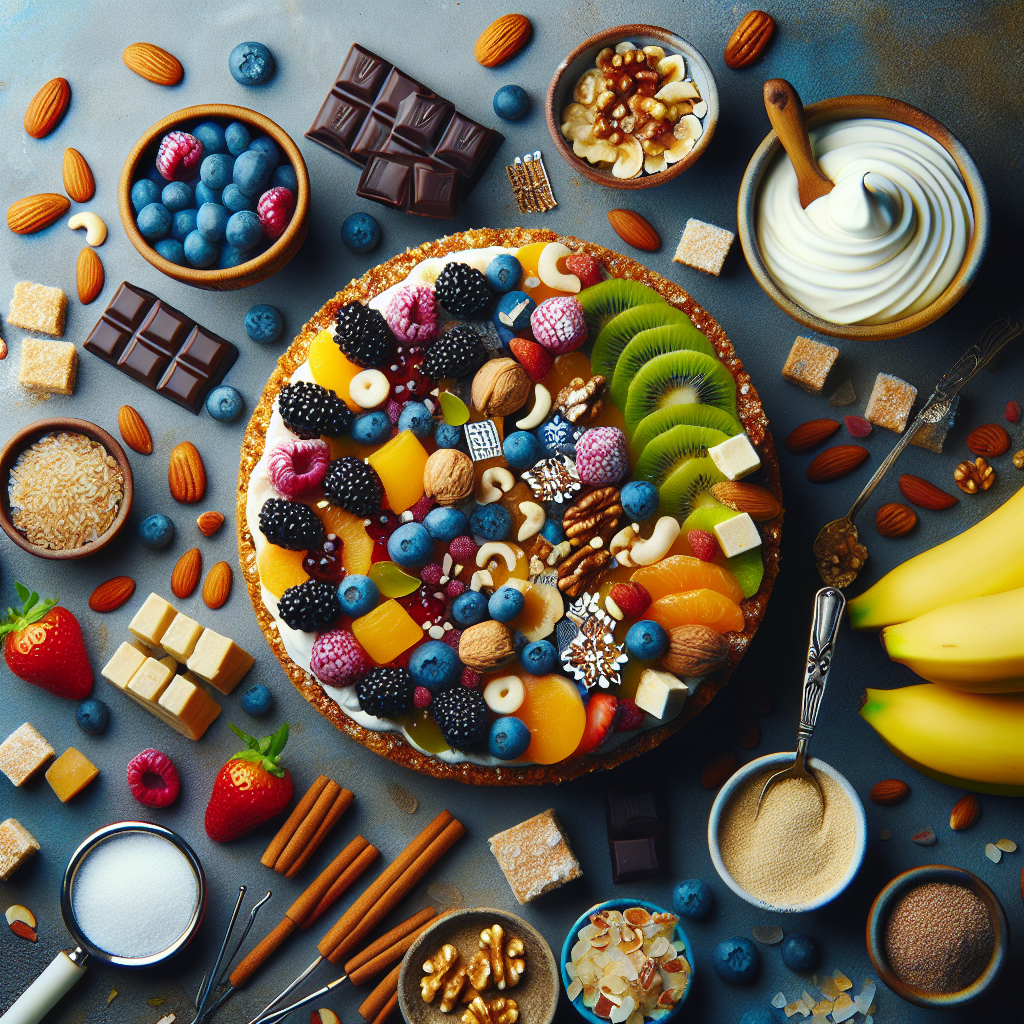If you’re a vegan with a sweet tooth who also happens to be living with diabetes, you might think that indulging in delectable desserts is out of the question. But fear not, because we have some mouth-watering solutions for you! In this article, we will show you how to create vegan diabetic-friendly desserts that are not only delicious, but also satisfy your sweet cravings without compromising your health. So get ready to treat yourself guilt-free with our easy, plant-based recipes that will make your taste buds dance with delight!
Choosing the Right Ingredients
Replacing dairy products
When making vegan and diabetic-friendly desserts, it’s important to find suitable alternatives to traditional dairy products. Fortunately, there are numerous options available in today’s market. You can replace cow’s milk with plant-based alternatives such as almond milk, soy milk, or oat milk. These alternatives not only add a creamy texture to your desserts but also provide essential nutrients. Additionally, you can use coconut milk or coconut cream to add richness and a slightly tropical flair to your treats.
Using natural sweeteners
Opting for natural sweeteners is a great way to add sweetness to your desserts without causing a spike in blood sugar levels. Some popular natural sweeteners to consider include stevia, erythritol, and monk fruit. These options are low in carbohydrates and have a minimal impact on blood sugar. You can also experiment with using ripe fruits like bananas, dates, or applesauce to sweeten your desserts naturally. These fruits add moisture and natural sweetness while providing additional nutritional benefits.
Opting for whole grains instead of refined grains
When choosing grains for your desserts, it’s important to prioritize whole grains over refined grains. Whole grains are higher in fiber, which helps to slow down the absorption of sugars into the bloodstream and keeps blood sugar levels stable. Look for ingredients like whole wheat flour, oats, or brown rice flour to incorporate into your recipes. These whole grains not only add a nuttier flavor and texture but also provide valuable nutrients like vitamins, minerals, and antioxidants.
Managing Sugar Levels
Understanding the glycemic index
The glycemic index (GI) is a measure of how quickly and extensively a food raises blood sugar levels. Understanding the GI of ingredients can help you choose foods with a lower impact on blood sugar. Opt for ingredients with a low GI, which means they are digested and absorbed slower, resulting in a more gradual rise in blood sugar. Berries, non-starchy vegetables, and legumes are excellent low GI options. On the other hand, high GI ingredients like refined sugars and white flours should be used sparingly or avoided altogether.
Reducing added sugars
To make your desserts more diabetic-friendly, it’s important to reduce or eliminate added sugars. While natural sweeteners can be used, moderation is key. Try gradually reducing the amount of sweetener in your recipes to adjust your taste buds and reduce your dependency on sweetness. You can also experiment with adding spices like cinnamon or vanilla extract to enhance the perceived sweetness without adding sugar.
Balancing carbohydrates and fiber
Balancing carbohydrates with fiber is crucial in managing sugar levels. Fiber helps to slow down the digestion and absorption of carbohydrates, preventing sudden spikes in blood sugar levels. Incorporate fiber-rich ingredients like flaxseeds, chia seeds, or psyllium husk into your desserts. Additionally, adding fruits and vegetables to your recipes can increase the fiber content while providing additional nutrients.

Enhancing Flavor and Texture
Using fruit purees as binding agents
When making vegan and diabetic-friendly desserts, finding suitable binding agents can be a challenge. A great option is to use fruit purees like mashed bananas or applesauce. These purees add moisture, sweetness, and help bind the ingredients together. They also provide natural flavors that complement a wide range of desserts, from cakes to cookies to muffins.
Incorporating nuts and seeds for crunchiness
Nuts and seeds are excellent additions to your diabetic-friendly desserts as they provide a satisfying crunch while adding valuable nutrients. Walnuts, almonds, and sunflower seeds are popular choices. You can incorporate them into your recipes by adding them to crusts, sprinkling them on top of pies, or mixing them into cookies or granola bars. Just be mindful of portion sizes as nuts and seeds are calorie-dense.
Experimenting with spices and flavors
Spices are wonderful additions to any dessert as they can elevate flavors without the need for additional sweeteners. Cinnamon, nutmeg, ginger, and cardamom are classic options that pair well with many vegan and diabetic-friendly recipes. Vanilla extract and almond extract can also enhance the taste of your desserts. Don’t be afraid to experiment with different flavor combinations to find what suits your taste buds best.
Preparing Sugar-Free Treats
Baking with sugar substitutes
When baking without sugar, it’s important to choose the right sugar substitutes. Popular options include stevia, erythritol, and monk fruit, which have minimal impact on blood sugar levels. These substitutes can be used in equivalent amounts to sugar in most dessert recipes. However, it’s important to note that sugar substitutes may have a slightly different taste or texture, so some trial and error may be necessary to find the perfect balance.
Creating desserts with low or no added sugar
To create desserts with low or no added sugar, focus on natural sweetness from ingredients like ripe fruits or unsweetened applesauce. These ingredients add moisture, flavor, and sweetness without the need for additional sweeteners. For example, you can make a delicious sugar-free fruit salad by combining a variety of fresh fruits and drizzling them with a splash of lemon juice or a sprinkle of cinnamon.
Using naturally sweet ingredients
Certain ingredients naturally have a sweet taste, making them excellent options for sugar-free treats. For example, dark chocolate with a high cocoa content can provide a rich sweetness without the need for added sugar. You can also experiment with sweet spices like cinnamon or nutmeg to enhance the natural sweetness of your desserts. Just remember to use these ingredients in moderation, as even natural sweetness can impact blood sugar levels.

Creating Dairy-Free Options
Replacing cow’s milk with plant-based alternatives
In vegan and diabetic-friendly desserts, cow’s milk can be easily replaced with plant-based alternatives such as almond milk, soy milk, or oat milk. These alternatives offer a creamy texture and can be used in equal amounts as a substitute for cow’s milk. They are also lower in carbohydrates and saturated fat, making them a healthier choice for individuals with diabetes.
Utilizing non-dairy alternatives for creaminess
When it comes to creating creamy desserts, there are plenty of non-dairy alternatives available. Coconut milk or coconut cream can add a luscious texture and tropical flavor to your desserts. Cashews can be soaked and blended to create a creamy base for cheesecake or ice cream recipes. Non-dairy yogurts or silken tofu can also provide a smooth and creamy texture to your desserts.
Exploring dairy-free chocolate options
Chocolate lovers need not worry about missing out on their favorite treat when following a vegan and diabetic-friendly diet. Look for dairy-free chocolate options made from cocoa butter and plant-based milk alternatives. These chocolates can be used in baking or enjoyed as a treat in their own right. You can also experiment with incorporating cocoa powder into your desserts for a rich chocolate flavor without the added sugar.
Increasing Fiber Content
Using whole grains and flours
Whole grains and flours are excellent sources of dietary fiber. When preparing diabetic-friendly desserts, try using whole wheat flour, oat flour, or brown rice flour instead of refined white flour. These options retain the bran and germ, which are high in fiber and other important nutrients. You can also experiment with whole grains like quinoa, amaranth, or buckwheat to add variety and increase the fiber content of your desserts.
Incorporating fiber-rich ingredients
Besides whole grains, there are many other fiber-rich ingredients you can incorporate into your desserts. Chia seeds, flaxseeds, and psyllium husk are excellent sources of soluble fiber and can be used as thickeners or egg replacements in recipes. Fruits and vegetables are also packed with fiber. Consider adding pureed prunes, grated zucchini, or mashed avocado to your desserts for an extra fiber boost.
Including fruits and vegetables
Fruits and vegetables are not only high in fiber but also provide essential vitamins, minerals, and antioxidants. Be creative and incorporate them into your desserts for added nutritional value. For example, you can make a delicious berry crumble using fiber-rich oats for the topping, or add grated carrots or zucchini to moisten and sweeten your cakes. Fruit salads or smoothies can also make refreshing and fiber-packed dessert options.

Adding Nutritional Value
Incorporating superfoods into desserts
Superfoods are nutrient-dense ingredients that can give your desserts a nutritional boost. Consider adding ingredients like goji berries, maca powder, or matcha powder to your recipes. These superfoods are rich in antioxidants, vitamins, and minerals, providing health benefits along with great taste. However, remember to use them in moderation, as they can be strong in flavor and may overpower the overall taste of your dessert.
Boosting protein content with plant-based sources
Protein is an important nutrient for overall health, and incorporating it into your desserts can help create a more balanced treat. Plant-based protein sources like legumes, nuts, and seeds are excellent options. You can add chickpea flour to cookies or bars, incorporate almond butter into your recipes, or sprinkle chia seeds on top of your desserts. These additions not only increase the protein content but also add a satisfying crunch and texture.
Optimizing nutrient density
When preparing vegan and diabetic-friendly desserts, it’s important to focus on nutrient density. Aim to include a variety of ingredients that are high in vitamins, minerals, and other beneficial compounds. Consider using dark leafy greens like spinach or kale in your smoothies or adding ground flaxseeds to your desserts for an omega-3 fatty acid boost. The more nutrient-dense your desserts are, the more they can contribute to your overall health and well-being.
Exploring Raw Desserts
Understanding the principles of raw food desserts
Raw food desserts are prepared without cooking or baking, making them a popular choice for individuals seeking vegan and diabetic-friendly options. These desserts rely on natural ingredients like nuts, seeds, fruits, and natural sweeteners. By keeping the ingredients raw, you preserve their natural flavors, enzymes, and nutrients. Raw desserts can be made into various forms, including pies, tarts, cheesecakes, and energy balls.
Using nut-based crusts and fillings
Nut-based crusts and fillings are a staple in raw desserts, providing both texture and flavor. Popular choices include almond, cashew, or walnut crusts. These crusts are usually made by grinding the nuts with dates or other natural sweeteners to create a sticky base. As for fillings, cashews are often soaked and blended with fruits or natural sweeteners to create a creamy and delicious filling that mimics the texture of traditional dairy-based desserts.
Creating no-bake treats
One of the advantages of raw desserts is that they require no baking, making them a quick and easy option for those with limited time or resources. No-bake treats can include energy balls made with nuts, seeds, and dried fruits, or refreshing fruit-based sorbets. Simply blend together the desired ingredients, shape them into bite-sized portions, and let them chill in the refrigerator until firm. These no-bake treats are perfect for satisfying your sweet tooth on the go.

Serving Size and Portion Control
Understanding portion guidelines
When indulging in desserts, it’s important to practice portion control. Even with diabetic-friendly and vegan options, consuming excessive amounts can still affect blood sugar levels. Refer to portion guidelines provided by healthcare professionals or nutritionists to understand appropriate serving sizes. These guidelines can help you enjoy your desserts without compromising your health. Remember that the quality of the ingredients matters just as much as the quantity.
Using smaller serving vessels
Another effective way to control portions is by using smaller serving vessels. Instead of opting for large plates or bowls, consider using smaller ramekins, dessert cups, or muffin molds to create individual servings. This not only helps with portion control but also adds an elegant and visually appealing touch to your desserts. It’s all about savoring every bite and appreciating the flavors without overindulging.
Practicing mindful eating
Mindful eating is a practice that encourages awareness and presence when consuming food. Applying this concept to dessert consumption can help you fully enjoy the flavors and textures while being conscious of portion sizes and how the dessert makes you feel. Take your time to savor each bite, recognizing the flavors, and paying attention to the signals your body gives you. This can help you find satisfaction with smaller portions and prevent overeating.
Considering Allergies and Sensitivities
Adapting recipes for gluten-free diets
For individuals with gluten allergies or sensitivities, it’s important to adapt recipes to be gluten-free. Replace traditional wheat flour with gluten-free alternatives like almond flour, coconut flour, or a gluten-free all-purpose flour blend. These options provide a similar texture and work well in various baking recipes. It’s also important to double-check the ingredient list of any additional ingredients used in the recipe to ensure they are gluten-free.
Creating nut-free options
Nuts are a common allergen, and it’s crucial to provide nut-free options for those with allergies. Substitute nut-based ingredients with seeds like sunflower seeds or pumpkin seeds in your recipes. Seed butters, such as sunflower seed butter or pumpkin seed butter, can also be used as alternatives to nut butter in many desserts. Alternatively, you can use gluten-free oats or coconut flakes to add texture and flavor to your recipes.
Avoiding common allergens
When preparing desserts for a wide range of individuals, it’s important to be mindful of common allergens and avoid using them in your recipes. Common allergens include dairy, eggs, wheat, soy, and peanuts. Utilize alternative ingredients like plant-based dairy substitutes, flaxseeds or chia seeds as egg replacements, and gluten-free flours to ensure your desserts are allergen-free. Always review the ingredient labels on any pre-packaged ingredients to check for allergen warnings.
By following these tips and techniques, you can create delicious, diabetic-friendly, and vegan desserts that are packed with nutrients, flavor, and texture. Remember to always consult with healthcare professionals or nutritionists to understand your specific dietary needs and make adjustments accordingly. Enjoy the process of experimenting and exploring new ingredients to create sweet treats that satisfy your cravings while supporting your health goals.


